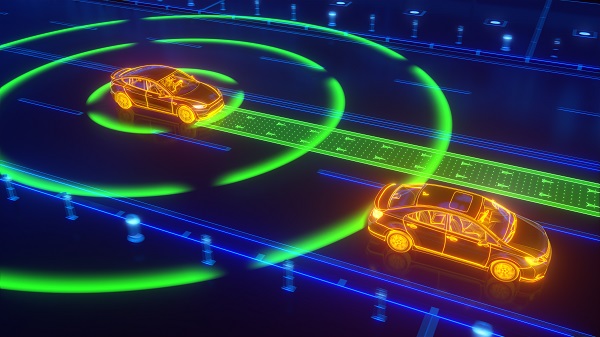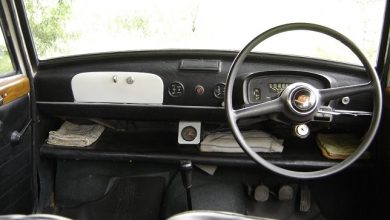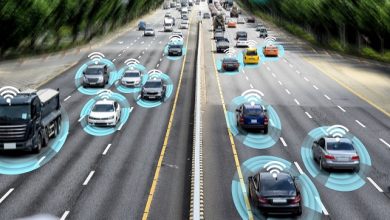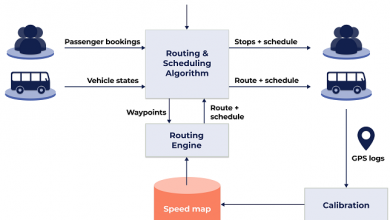Emergency services for everyone. How connected cars can save lives and fuel profitability.

When a crash occurs, every second that passes can mean the difference between a quick recovery and serious injury, or even life and death.
With automatic crash detection and eCall services in place, a connected vehicle will instantly transmit location information, travel direction, and severity data to eCall service centers. This enables precise dispatch of local first responders to deliver rapid emergency care. Without eCall, drivers (and their passengers) might be stuck for hours before they are found, unable to call for help themselves.
In Europe, eCall has been mandated since 2018 on all new production vehicles. The European GNSS Agency estimates that by speeding up emergency responses by 40% in urban areas, and 50% in rural areas, eCall helps to avert 2,500 vehicle deaths per year and save around €26 billion annually (US $31 billion).
Unfortunately, in North America and many other regions around the world, no such mandate exists, and the availability of such services varies from brand to brand, and across model lineups. Many newer model luxury vehicles include emergency response services (or, are at least offered as an optional upgrade), but as you head into the lower price points, further back in the model years, or into the secondary markets of OEMs, the availability of these features becomes increasingly sparse, leaving the vast majority of drivers without this life-saving technology.
The lagging deployment of eCall services globally isn’t just a missed business opportunity—it also comes at a direct cost to human lives. With distracted driving on the rise, now is the time to implement these life-saving services at scale.
Distracted Driving Raises Crash Risks
According to the CDC, motor vehicle crashes are a leading cause of death in the US—in fact, more than 100 people die every day on US roads. We can safely assume that this isn’t just an American issue.
Interestingly, in a year when a global health crisis kept many people at home and off the roads, preliminary data for 2020 from the National Highway Traffic Safety Administration (NHTSA) showed that despite major decreases in miles driven, the traffic fatality rate per 100 vehicle miles traveled (VMT) is projected to increase to 1.25 in the first half of 2020, up from 1.06 in the same period in 2019. Risky driving behaviors, such as speeding, failing to wear seat belts, and driving under the influence of drugs or alcohol, are some of the reasons cited for this latest rise in numbers. But what about distracted driving? Unfortunately, the NHTSA is reliant on an outdated, manual data collection policy that varies by state, by agency, and in many cases, does not even offer phone-based distraction as a possible response for crash reporting.
The ubiquity of smartphones has become a major threat to road safety. According to Arity, 1 in 4 drivers are using their phones nearly 5 times an hour, making them 70% more likely to be in a crash than an average driver. A recent study by CMT analyzed billions of miles driven in the United States and showed that the average number of distractions per 100 miles has increased by 15% over the past three years, with 41% of daytime trips involving at least 20 seconds of cumulative phone distraction. The report suggests that at least 19% of analyzed crashes were attributable to phone-based distraction and that by 2025, 4,000 people per year will lose their lives from smartphone-distraction-related crashes.
While advanced driver assistance systems (ADAS) are key to decreasing avoidable crashes in the long run, drivers are only beginning to adjust to having this technology as part of their driving experience, with mass adoption happening in a multi-phased approach. Furthermore, these technologies are only offered in a limited subset of newer model vehicles.
As this trend continues, the justification for deploying emergency response services is clear. Especially when you consider that there are a billion or so vehicles on our roads without this safety advantage.
Easing Deployment Will Drive Change
Without regulations to mandate emergency services at scale, the onus falls on automotive OEMs and the broader telematics industry to work together to do the right thing for drivers around the world.
What’s needed is a solution that meets the exacting quality standards of OEMs, yet can be easily (and cost-effectively) deployed at scale in a matter of months (not years). For ultimate ease of deployment, retrofit solutions leveraging OBD-II devices provide the best combination of quality, cost-effectiveness, and scalability. They are plug-and-play, inexpensive, and can be shipped directly to customers for self-install. For in-market vehicles with embedded telematics control units (TCUs), an over-the-air (OTA) update combined with a cloud-based platform integration can enable a cost-effective emergency services upgrade, further enhancing existing connected services and giving customers a reason to sign up and stay enrolled in an OEM’s subscription program.
However, the hardware is just the first piece of the puzzle. Seamless deployment requires an end-to-end solution that includes (at least) four integrated components:
- Telematics Devices: A 4G LTE-enabled OBD-II device, or an embedded TCU, serves as the telematics hardware and primary source of identifying a crash event. The hardware must be fully validated to accurately and reliably recognize crash events, providing a rich data package that includes severity and contextual information to inform the appropriate emergency response. Leveraging devices that are already validated and/or certified with OEM-grade crash detection, not only reduces risk, but also shortens time to market.
- Connected Mobility Platform: The cloud platform is at the core of any emergency services program. It’s the gateway to ingesting the crash data and also the pathway to activating the appropriate response via an eCall service provider like Bosch—a process that must occur in near real-time with enterprise reliability.
- eCall Service Integration: There are justifiably strict regulations associated with deploying emergency response services. In the USA, for example, there are non-negotiable requirements to support the 6,000-plus public safety answering points (PSAPs) that make 911 possible on a nationwide basis. There are also stipulations on how quickly emergency calls need to be answered, as well as language requirements, data protection, and buffers for accidental calls.
- User Experience: A seamless user experience should include both an in-car voice service, which can be enabled with VoLTE calls and Bluetooth technologies, as well as an in-app user interface for manual eCall activation. Ideally, the eCall service isn’t standalone, but is instead at the core of a robust connected car service that includes other sought-after safety, security and convenience features, integrated 3rd party services, and a roadmap towards the future.
Monetization Matters, and Safety (Still) Sells
From Detroit to Wall Street, Stuttgart to Seoul, Tokyo to Silicon Valley, the promise of vehicle data and connected service monetization remains at the core of nearly every OEMs mobility strategy. In fact, there’s more pressure than ever for incumbent OEMs to shift their connected services division from a heavily burdened cost center to a growth-minded profit center that drives customer engagement and brand loyalty.
Unfortunately, as highlighted by Gartner’s 2021 Guide to Connected Car Profitability (accessible to Gartner clients, subject to subscription), many OEMs find themselves in a vicious circle of connected car unprofitability, underscored by limited value recognition, both on an internal basis (e.g., demonstrating value to internal OEM processes) and also externally to customers (e.g., very few connected features deliver user-recognized value).
Despite being in a world of constant and rapid change, some value propositions have truly stood the test of time. Case in point, safety consistently ranks as the most desired feature category by consumers. With the increasing impact of distracted driving, this trend is likely to intensify in the coming years.
A recent mass-market consumer survey by one of Mojio’s customers highlighted the top five most desirable connected car features, with safety-focused services occupying the top two slots:
- App-based roadside assistance
- Crash detection and emergency eCall services
- Predictive maintenance alerts
- Exclusive discounts on vehicle-related services
- Vehicle telematics, diagnostic codes, and alerts
Correspondingly, a 2021 consumer survey from Urgently reinforced the strong demand for connected safety services, with 72% and 62% of consumers respectively rating Early Collision Detection and Emergency services as either “Desirable” or “Very Desirable”, with Early Collision Detection being identified as the #1 most desirable connected-assistance feature.
Retrofit Connected Car Solutions for the Win-Win-Win
Despite clear and well-established purchase intent for emergency services, many OEMs have yet to deploy emergency solutions at scale. As such, the vast majority of vehicles remain without critical safety features, such as automatic crash detection and eCall services.
Retrofit telematics solutions, such as those enabled by OBD-II devices, can democratize life-saving connected vehicle services on a global basis, allowing drivers to bypass lapses in government regulation and avoid waiting for lengthy OEM development cycles to finish. Drivers can get the safety features they want now, on the cars they already drive, with fairly priced subscriptions.
By offering highly-valued crash detection and eCall services on a retrofit basis, OEMs, as well as a growing pool of connected mobility service providers, can aggressively challenge the vicious circle of connected car unprofitability and set the stage for further investment, innovation, and growth. It’s clear that doing the right thing also happens to be very good for business. Together, as an industry, we can harness the power of telematics to save lives.
Author:

Kenny Hawk
CEO
Mojio
Growth CEO and board member. Raised over $200 Million building 4 successful software and hardware startups from concept through successful IPO and acquisition. Completed multiple company turnarounds with successful exits. Scaled businesses from scratch to $50M ARR with 250 employees.
Published in Telematics Wire





